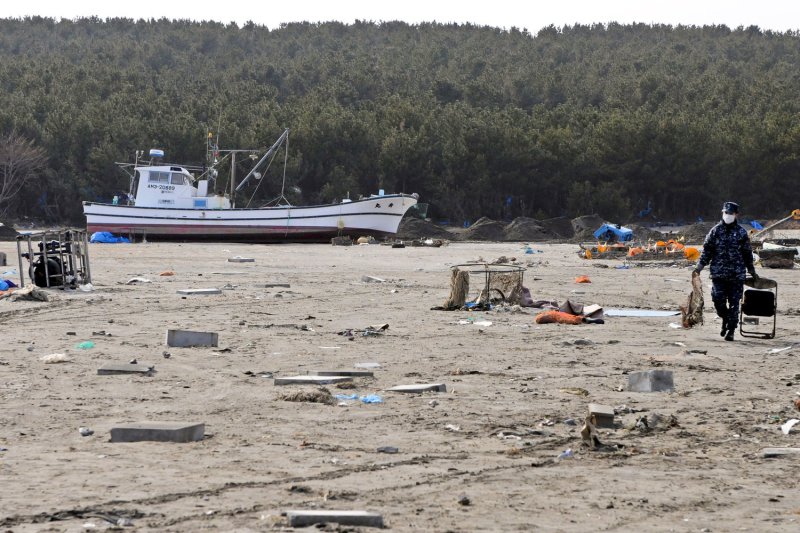PASADENA, Calif., Dec. 5 (UPI) -- The March 2011 tsunami in Japan was a long-hypothesized "merging tsunami" that doubled its destructive power before reaching shore, scientists said.
Researchers from NASA and the Ohio State University said satellites captured not just one wave front that day, but at least two -- which merged to form a single double-high wave far out at sea capable of traveling long distances without losing its power, an OSU release said Monday.















